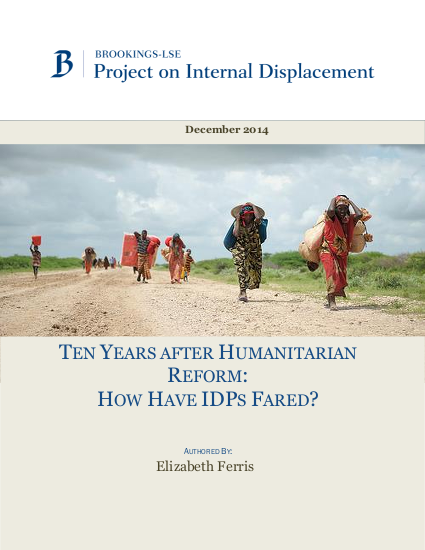
In 2004, the Brookings Project on Internal Displacement and the UN Office for the Coordination of Humanitarian Affairs (OCHA) undertook a study that found major shortcomings in the ways in which the international community was responding to internally displaced persons (IDPs). In light of these findings, Brookings and OCHA developed a number of recommendations aimed at improving IDP protection and assistance. The study, entitled Protect or Neglect: Toward a More Effective UN Approach to the Protection of Internally Displaced Persons, directly contributed to the humanitarian reform initiatives launched by the Emergency Relief Coordinator in 2005.1 Much has happened in the ten years since the 2004 study, including political changes in countries with large numbers of IDPs and reform of the international institutional architecture. It thus seemed timely to take a step back and review the extent to which these changes have addressed the shortcomings in IDP protection and assistance identified in the 2004 review. Building on the initial Brookings/OCHA report, the Brookings-LSE Project on Internal Displacement developed a research plan for an independent study around the overarching question: How are IDPs Faring Ten Years after Humanitarian Reform? The study sought to assess whether institutional reforms of the humanitarian system (such as those carried out through the cluster approach) have improved IDP protection and assistance, as well as the extent to which national authorities are protecting and assisting IDPs within their borders.